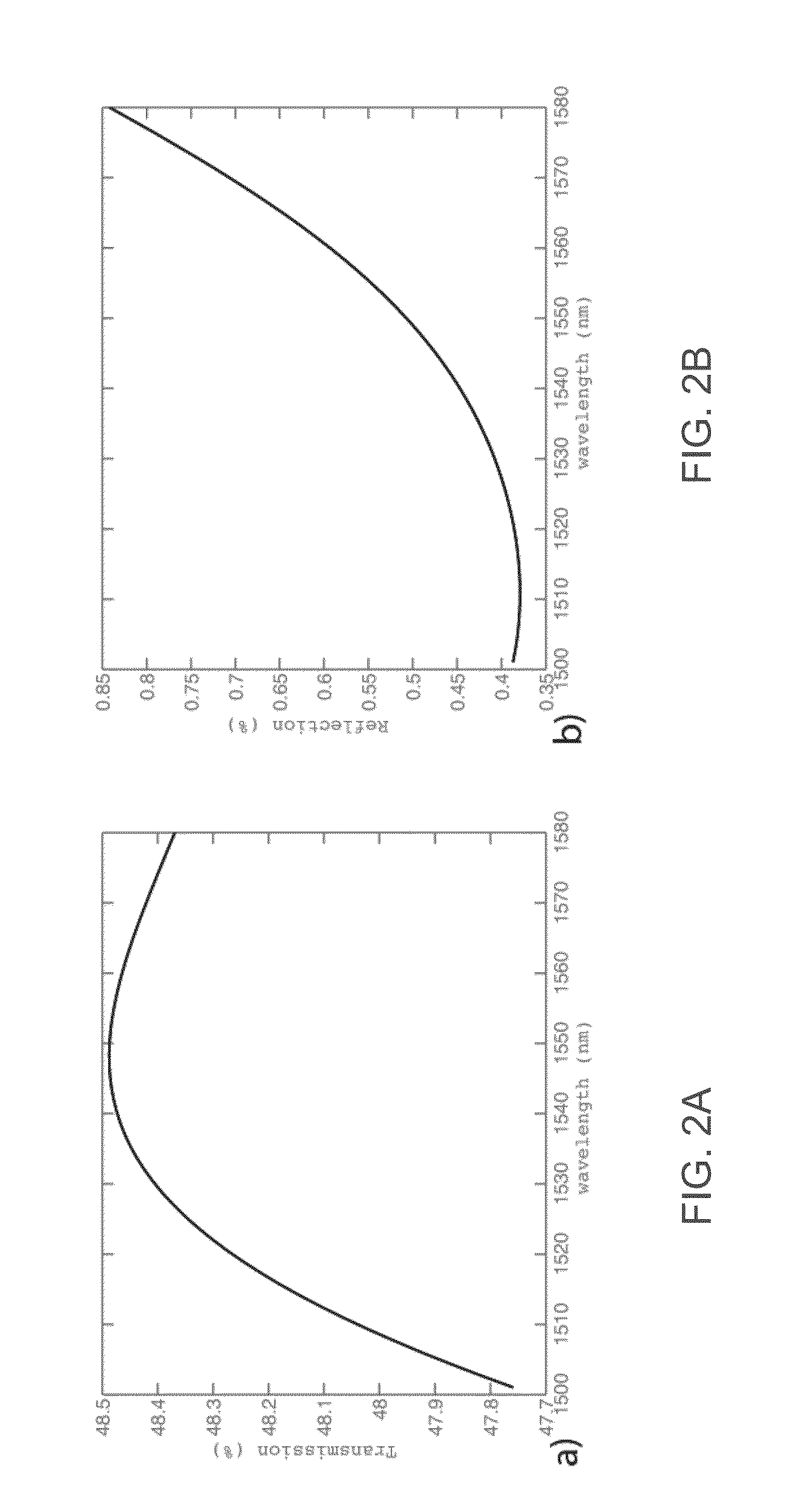Methods for designing photonic devices
- Summary
- Abstract
- Description
- Claims
- Application Information
AI Technical Summary
Benefits of technology
Problems solved by technology
Method used
Image
Examples
Embodiment Construction
[0036]We have designed a compact, low-loss and wavelength insensitive Y-junction for submicron silicon waveguide using FDTD and particle swarm optimization (PSO), and fabricated the device in a 248 nm CMOS line. We have measured an average insertion loss of 0.28±0.02 dB across an 8-inch wafer. The device footprint is less than 1.2 μm×2 μm, orders of magnitude smaller than MMI and directional couplers. The function of the invention is to provide a 1×2 power splitter for submicron silicon waveguides.
[0037]Our device has very low loss, small footprint, low wavelength sensitivity and was successfully fabricated by 248 nm CMOS with good cross-wafer uniformity.
[0038]The device can be part of a more complicated optoelectronic device, such as a Mach-Zehnder modulator, or a basic building block of integrated silicon photonic circuit.
[0039]The device can be a useful component of the process design kit (PDK) of a silicon photonics foundry. Companies commercializing silicon photonics technology...
PUM
 Login to View More
Login to View More Abstract
Description
Claims
Application Information
 Login to View More
Login to View More - R&D
- Intellectual Property
- Life Sciences
- Materials
- Tech Scout
- Unparalleled Data Quality
- Higher Quality Content
- 60% Fewer Hallucinations
Browse by: Latest US Patents, China's latest patents, Technical Efficacy Thesaurus, Application Domain, Technology Topic, Popular Technical Reports.
© 2025 PatSnap. All rights reserved.Legal|Privacy policy|Modern Slavery Act Transparency Statement|Sitemap|About US| Contact US: help@patsnap.com



